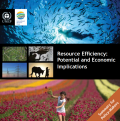The green economy in North America is at a critical crossroads. Will it foster a new wave of economy-wide innovation, employment, and green growth, or will green sectors remain a niche within an overall “brown” economy? Much will depend on what replaces the current “policy void” since the green stimulus policies of the Great Recession. Currently, three major market disincentives remain: environmentally harmful subsidies, inadequate market-based incentives, and insufficient public support for private R&D. A policy strategy for green growth requires phasing out and rationalizing subsidies, instigating effective market-based instruments, and allocating the revenues raised to enhance green innovation.
This article was published in a special edition of Canadian Public Policy, “Big Ideas for Sustainable Prosperity: Policy Innovation for Greening Growth”, guest edited by the Smart Prosperity Institute.


This paper provides a regional, empirical analysis of policy portfolios that aim to contribute towards a ‘Green Energy Economy’ (GEE) transformation. Taking green economy policies and related indicators as the analytical framework, the study examines (i) the composition of policy portfolios promoting low-carbon energy technologies, (ii) short-term trends related to the GEE, (iii) long-term empirical observations of GEE-related factors, and (iv) whether, given these results, CO2 emission reduction targets can be met. The study focuses on the following regions: Africa, Asia, Latin America and the Caribbean, the Middle East, Non-OECD Europe and countries from the Former Soviet Union, Oceania, OECD Europe, and OECD North America. Findings reveal that low-carbon energy technology policies have spread rapidly since the 2000s. Economics incentives are widespread across all regions, highlighting the growing use of market-based policies. The short-term analysis shows that per capita income growth (and to a lesser extent population growth) are the main obstacles to transition towards a GEE transformation.
The green economy policy discourse has devoted a lot of attention to the design of public policy addressing low-carbon technologies. In this paper the researchers examine the impacts of public R&D support and feed-in tariff schemes on innovation in the wind energy sector. The analysis is conducted using patent application data for four western European countries over the period 1977–2009. Different model specifications are tested, and the analysis highlights important policy interaction effects. The results indicate that both public R&D support and feed-in tariffs have positively affected patent application counts in the wind power sector. The (marginal) impact on patent applications of increases in feed-tariffs has also become more profound as the wind power technology has matured. There is also some evidence of policy interaction effects in that the impact of public R&D support to wind power is greater at the margin if it is accompanied by the use of feed-in tariff schemes.
